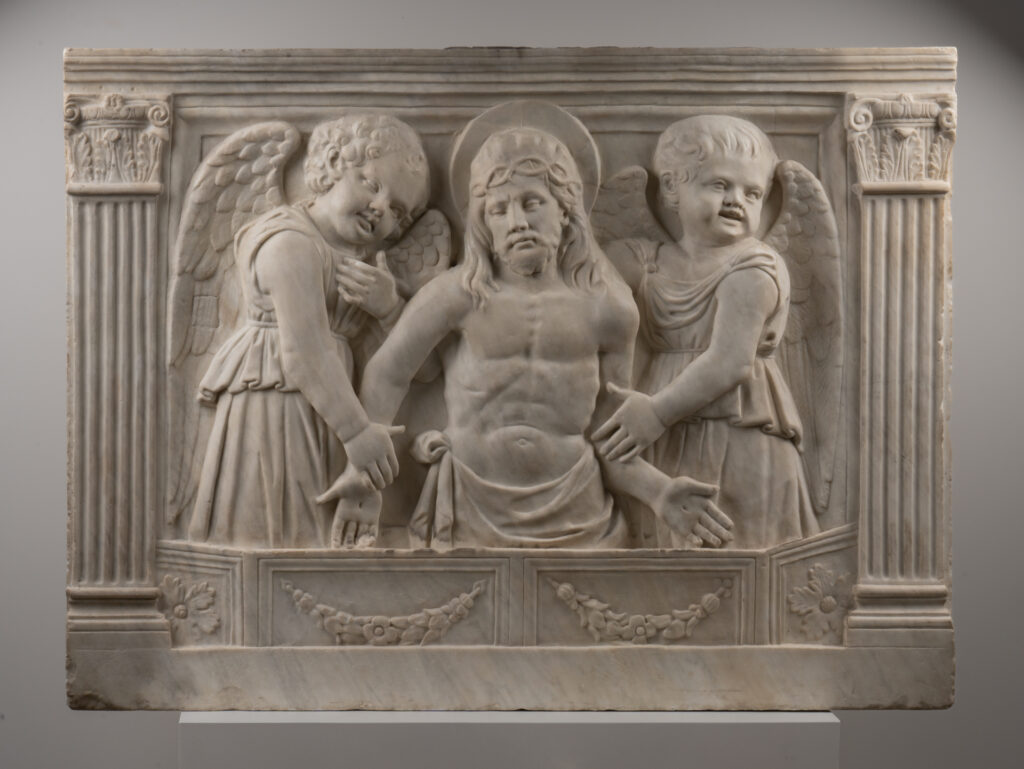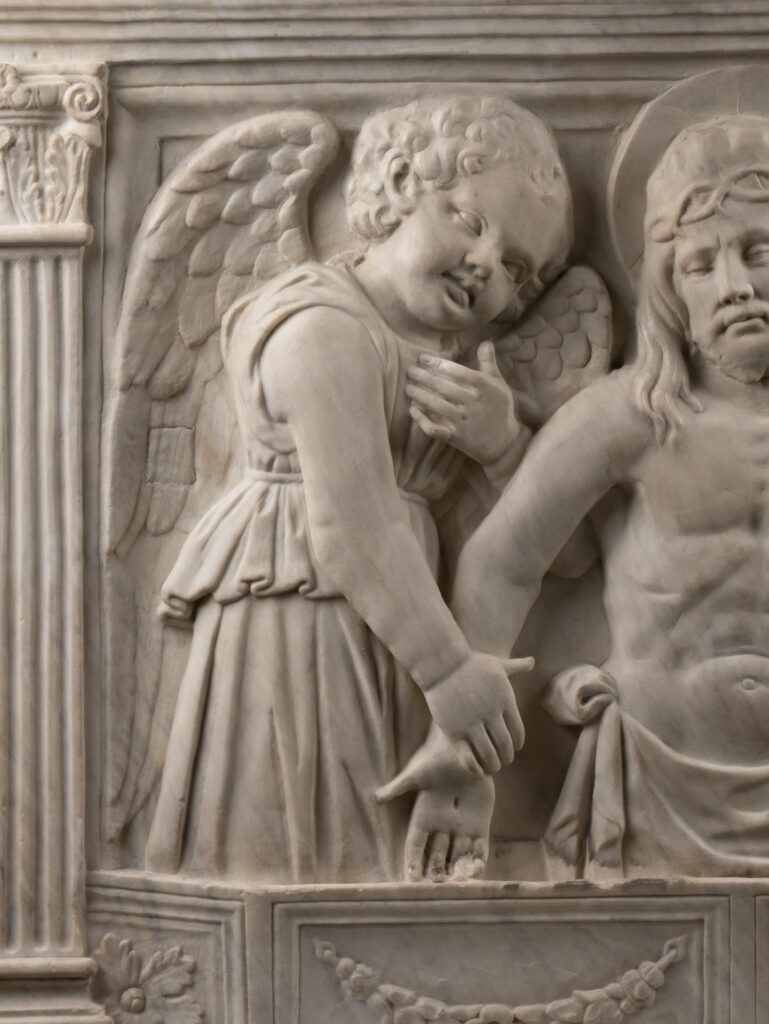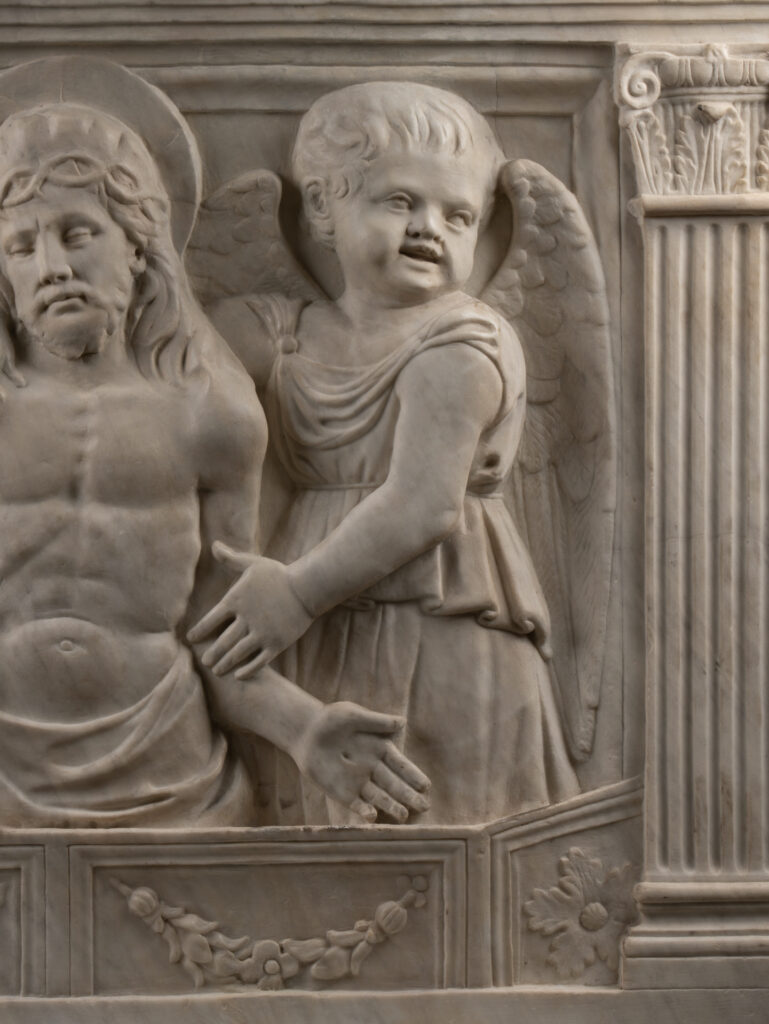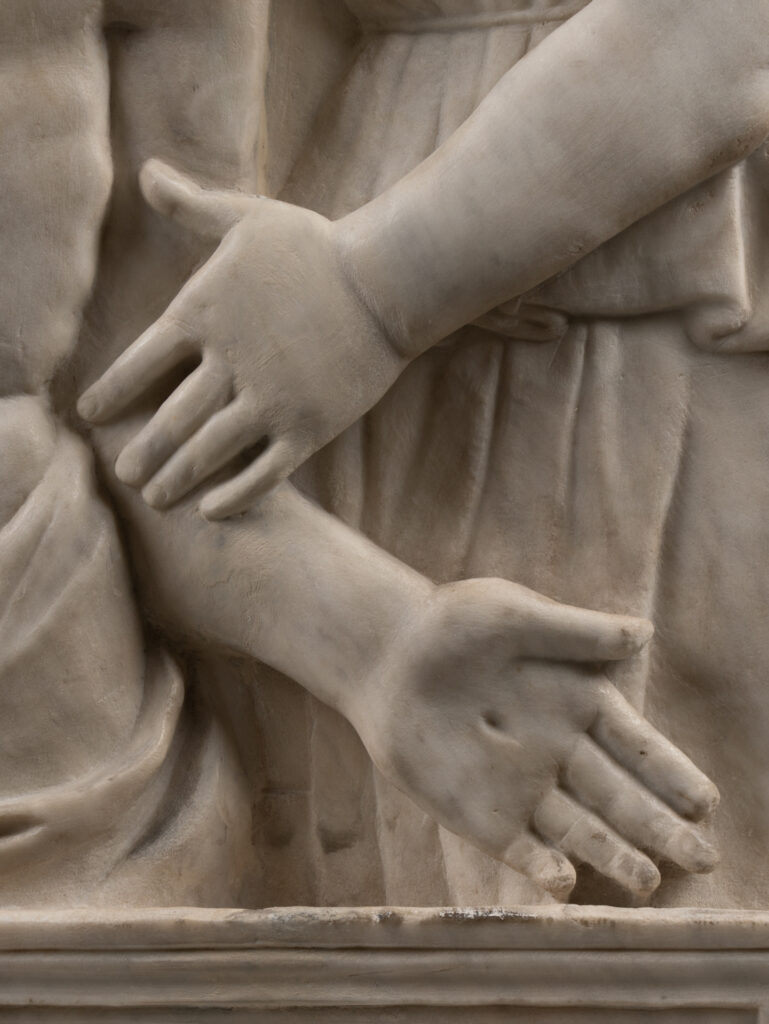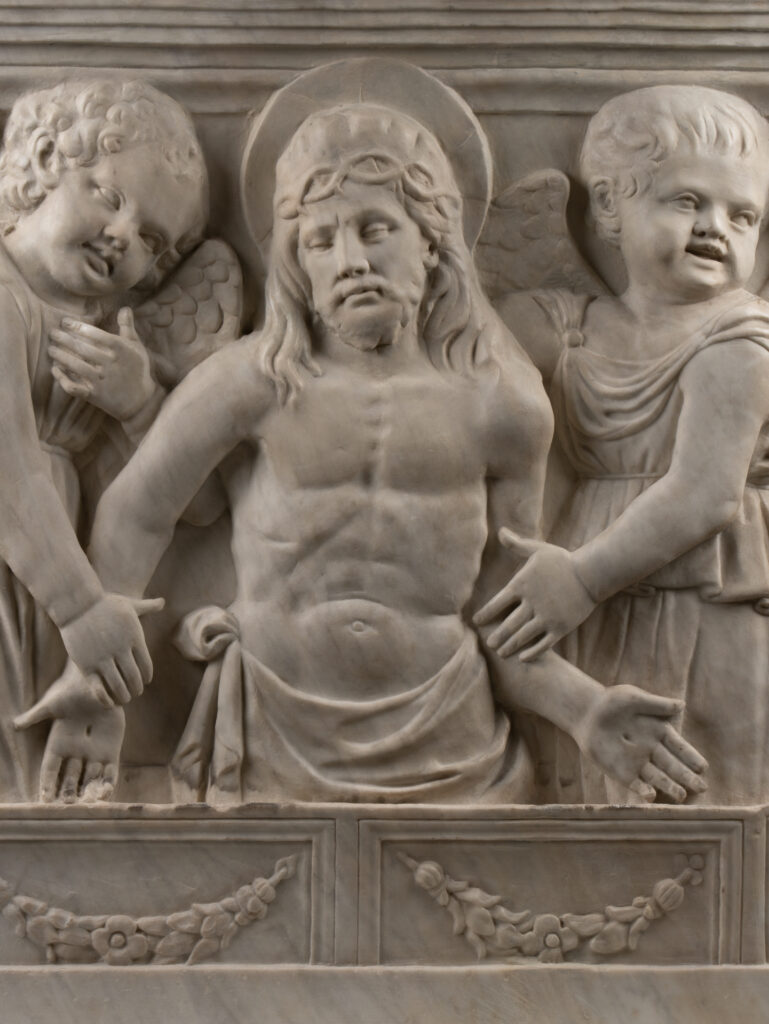This splendid marble bas-relief shows us the Imago pietatis, i.e. the moment when Christ is emerging from the tomb between life and death, supported by two angels.
Our bas-relief comes from the collection of Achille de Clemente, a late 19th-century collector in Florence. We can see a photo of the work in the catalog listing his collection. Our work is referenced there under number 50692. “Collezioni d’arte tra ottocento e novecento”, Jacquier fotografi a firenze 1870-1935.
On our work, we can see Christ, emerging from his tomb, haloed, wearing the crown of thorns, and his eyes half-open as if unconscious. His facial features are stark, supported by the stigmata visible on his hands and side. He wears a perizonium tied to his side. Everything seems to testify to the difficult ordeal he is facing through his resurrection.
Christ is accompanied by two angels. One of them is leaning towards him, one of his hands resting on his heart, while the other looks out from the bas-relief, seemingly asking other celestial figures for help. Their very long wings, and the heads of the figures, protrude from the work’s given inner frame. The angels’ garments are separated into two parts, with a toga held in place by a fibula on the shoulder. Their faces are 3/4, revealing their tortured, passionate expressions.
The details of the sculpture, particularly on the tomb, make this composition even more realistic. In fact, the tomb from which Christ emerges is made up of several panels. On the front, it is decorated with horns of plenty, symbolizing the prosperity of the world to come. On either side of it, other panels are carved, extending slightly in perspective towards the back. Each panel features a large flower. Each side of the work is framed by a Corinthian column, not only closing the scene, but also adding architectural decoration and a pictorial dimension to the bas-relief.
This bas-relief, depicting a typical 15th-century subject, is attributed to the entourage of Bartolomeo Bellano, a pupil of Donatello.
The imago pietatis is inspired by the image of the Byzantine epitaphios (Christ is depicted in his tomb surrounded by his loved ones), which was present in the 8th century and then exported to Europe, to be transformed in the 13th century into the image we can see on our work. This devotional image was later used in sculptures, paintings and illuminations. This theme is apocryphal, meaning that it does not appear in the Bible. Donatello made a marble version of it, which became an inspiration for many 15th-century artists.
Donatello belonged to the artists of the early Renaissance, and was therefore one of the pioneers of those who dared to humanise the figures in their works, especially the divine figures. At that time, life wasn’t easy, so it was customary to show that divine beings also shared in this suffering. It was quite innovative to think like this, and for artists such as Donatello, it was a risk to take in view of the possible negative reaction of the clergy.
We know that he stopped off in Padua to work. After his visit, and with the works he left behind, his style remained permanent in this city. He left an indelible mark. As a result, Bartolomeo Bellano, who came from Padua, followed in Donatello’s footsteps. In his work, we find works that we can link to our bas-relief.
We can compare Bartolomeo Bellano’s style to our work through the similarities in the tortured expressions of the figures and the hardness of the joints. Particularly the rigid arms.
It is likely that our bas-relief was part of an ensemble, such as the tabernacle reliquary in the Basilica of Santa Maria Gloriosa dei Frari.
Our in-depth research into this marble bas-relief depicting the Imago Pietatis has enabled us to place it in an artistic tradition marked by great expressivity and attention to detail.
By comparing stylistic elements, in particular the features of the angels’ faces, we were able to establish a significant resemblance with the works of Bartolomeo Bellano.
This comparison enriches our understanding of the work and sheds valuable light on the context in which it was created, confirming that it belonged to Bartolomeo Bellano’s entourage.
